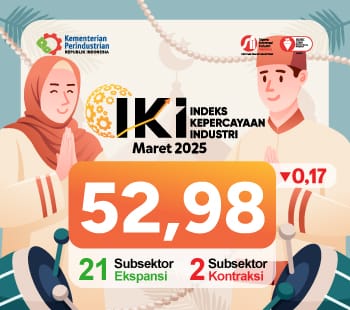What vulnerabilities and security issues plague web and mobile apps?
By : Nata Kesuma | Wednesday, November 24 2021 - 21:00 IWST

Cybersecurity Jobs. PHOTO: Cybercrime Magazine.
INDUSTRY.co.id - One of the most compelling reasons organisations use third-party application security testing is to extend their own software security testing capability when circumstances make adding new resources problematic.
That’s certainly the case in today’s pandemic environment. According to research from Cybersecurity Ventures, the number of unfilled cybersecurity positions in the world currently is over 3.5 million — enough people to fill 50 football stadiums.
In the U.S., nearly half of the estimated 950,000 cybersecurity positions are unfilled. The CyberSeek project of the National Institute of Standards and Technology in the U.S. Department of Commerce calls this a dangerous shortage, especially when you consider the rise of cyberattacks, data breaches, and ransomware holdups over the past 18 months.
“We’ve seen a heavy increase in assessment demand throughout the pandemic,” Girish Janardhanudu, vice president of security consulting at Synopsys Software Integrity Group said. “Cloud-based deployments, modern technology frameworks, and the rapid pace of delivery is forcing security groups to react more quickly as software is released. With insufficient AppSec resources in the market, organisations are leveraging application testing services such as those Synopsys provides in order to flexibly scale their security testing.”
Synopsys’ recently published its “2021 Software Vulnerability Snapshot” report, examining data from 3,900 tests on commercial web and mobile applications conducted by Synopsys security consultants during 2020. Industries represented in the report include software and internet, financial services, business services, manufacturing, media and entertainment, and healthcare.
The tests included penetration testing, dynamic application security testing, and mobile application security analyses, designed to probe running applications as a real-world attacker would, with the goal of identifying vulnerabilities that could then be triaged and remediated as necessary.
The need for a full spectrum of software security testing
A full 97% of the tests uncovered some form of vulnerability, with 30% having high-risk vulnerabilities, and 6% having critical-risk vulnerabilities. Twenty-eight percent of the applications tested had some exposure to cross-site scripting attacks, one of the most prevalent and destructive high- / critical-risk vulnerabilities impacting web applications.
The report makes it clear why a full spectrum of application security testing is an essential component of managing software risk in today’s world. While “transparent box” testing such as static application security testing (SAST) can bring visibility to security issues early in the software development life cycle, SAST cannot uncover runtime security vulnerabilities. And some vulnerabilities cannot be easily detected by automated testing tools—they need human oversight to be uncovered.
For example, the only effective way to detect an insecure direct object reference (IDOR), an issue that allows attackers to manipulate references in order to gain access to unauthorized data, is by having a human perform a manual test.
Clearly, there’s no one best approach to application security testing. Humans need to perform the security tests they’re the most effective at carrying out, with their efforts augmented by automated testing.
2021 OWASP Top 10 vulnerabilities were discovered in 76% of the targets. Application and server misconfigurations were 21% of the overall vulnerabilities found in the tests, represented by the OWASP A05:2021 — Security Misconfiguration category. And 19% of the total vulnerabilities found were related to the OWASP A01:2021 — Broken Access Control category.
Insecure data storage and communication vulnerabilities plague mobile applications. Eighty percent of the discovered vulnerabilities in the mobile tests were related to insecure data storage. These vulnerabilities could allow an attacker to gain access to a mobile device either physically (i.e., accessing a stolen device) or through malware. Fifty-three percent of the mobile tests uncovered vulnerabilities associated with insecure communications.
Even lower-risk vulnerabilities can be exploited to facilitate attacks. Sixty-four percent of the vulnerabilities discovered in the tests are considered minimal-, low-, or medium-risk. That is, the issues found are not directly exploitable by attackers to gain access to systems or sensitive data.
Nonetheless, even lower-risk vulnerabilities can be exploited to facilitate attacks. For example, verbose server banners—found in 49% of the tests—provide information such as server name, type, and version number, which could allow attackers to perform targeted attacks on specific technology stacks.
There is an urgent need for a software Bill of Materials. Of note was the number of vulnerable third-party libraries in use; they were found in 18% of the penetration tests conducted by Synopsys application testing services.
With many companies having hundreds of applications or software systems in use, each themselves likely having hundreds to thousands of different third-party and open source components, an accurate, up-to-date software Bill of Materials is urgently needed to effectively track those components
Read Also
Wireless Logic Selected By Thales As IoT Connectivity Partner
Totolink Strengthens Commitment to Innovative and Reliable Network…
BDDC Inaugurates JST1 TIER IV Data Centre in Jakarta to Strengthen…
MoreLogin, the World's #1 Antidetect Browser, Showcased at Affiliate…
Experts gather in Nanning to support high-quality development of…
Today's Industry

Rabu, 09 Juli 2025 - 08:55 WIB
Indonesia's First Harman Professional Experience Center Opens in Jakarta
PT Inti Megah Swara (IMS Indonesia) announces the grand opening of the country's first Harman Professional Experience Center, located at Desound Melawai, South Jakarta.

Senin, 09 Juni 2025 - 14:22 WIB
Savyavasa and Permata Bank Launch Exclusive Foreign Mortgage Program
Savyavasa, a luxury residential development by Swire Properties and JSI Group under PT Jantra Swarna Dipta, in collaboration with Permata Bank, presents a new solution for foreign nationals…

Rabu, 21 Mei 2025 - 10:09 WIB
Indonesia, Thailand Sign MoU on Health Sector, Focusing on Global Capacity, Collaboration
As a part of President Prabowo Subianto’s official visit to Thailand, both countries signed a Memorandum of Understanding (MoU) on health sector, in an effort to strengthen bilateral cooperation…

Rabu, 21 Mei 2025 - 10:06 WIB
Indonesia, Thailand Deepen Cooperation on Security, Trade, and Regional Stability
resident Prabowo Subianto has reaffirmed Indonesia’s strong commitment to deepening bilateral relations with Thailand during the meeting with Thailand’s Prime Minister Paetongtarn Shinawatra…

Selasa, 20 Mei 2025 - 12:44 WIB
Boediman Widjaja's Technology Ready to be Adopted in Jababeka Industrial Estate (KIJA)
In an exclusive seminar entitled "A Great Step: Boediman Widjaja Story - Going from Indonesia, Thriving in Singapore" held at the President Lounge, Menara Batavia, Boediman Widjaja, Founder…

















News Comment